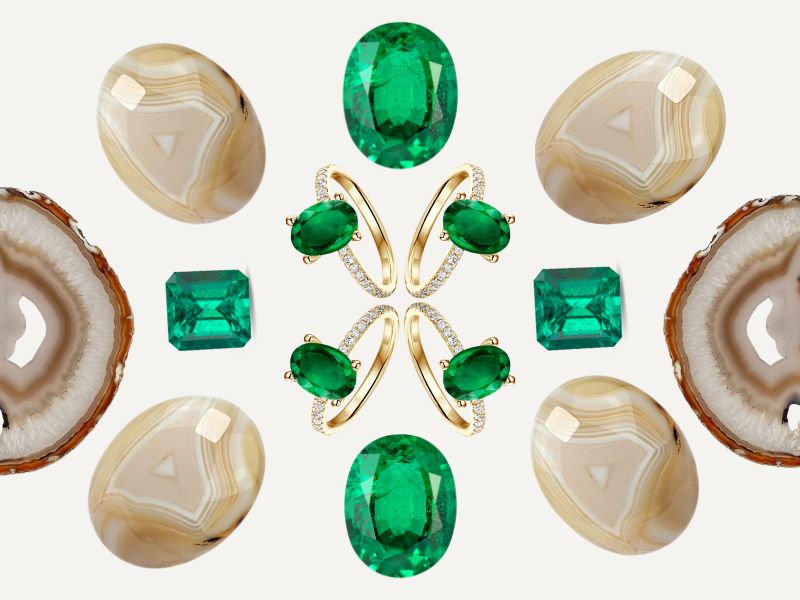
May Birthstone: Emerald or Agath
Share
For centuries, the position of May’s stone has been shared between agate and emerald in various countries and traditions. According to George Kunz, the first American gemologist and vice president of Tiffany & Co., in his 1893 study, agate was considered the stone of May in Jewish, Roman, Spanish, and Italian traditions, while emerald was favored in Russian, Polish, and Arabic traditions.
Perhaps due to the lower value of agate, the American National Retail Jewelers Association in 1912, when formalizing the list of birthstones, chose emerald as May’s stone.
In European astrology, two-thirds of May fall under Taurus, a sign ruled by Venus. Emerald, in this tradition, is considered the stone of Venus. It’s logical that wearing emerald might be seen as enhancing Venusian energies in a person: the ability to enjoy life, create material beauty, give and receive love, and achieve material success.
In Indian astrology, May is divided between Aries and Taurus, signs ruled by Mars and Venus, respectively. However, in this system, emerald is associated with the planet Mercury, which, interestingly, aligns well with the stone’s properties. Moreover, early May often marks the Sun’s exaltation point and the special day of Akshaya Tritiya, when both the Sun and Moon are exalted.
In this context, agate has significant connections to May in the Hindu tradition. White agate corresponds to the Moon, and red agate represents Mars. Thus, agate has a stronger symbolic link to May in the Hindu tradition.

Olga Bachurina,
Co-Founder of Venus in Libra,
Certified by GIA & Gübelin Academy



